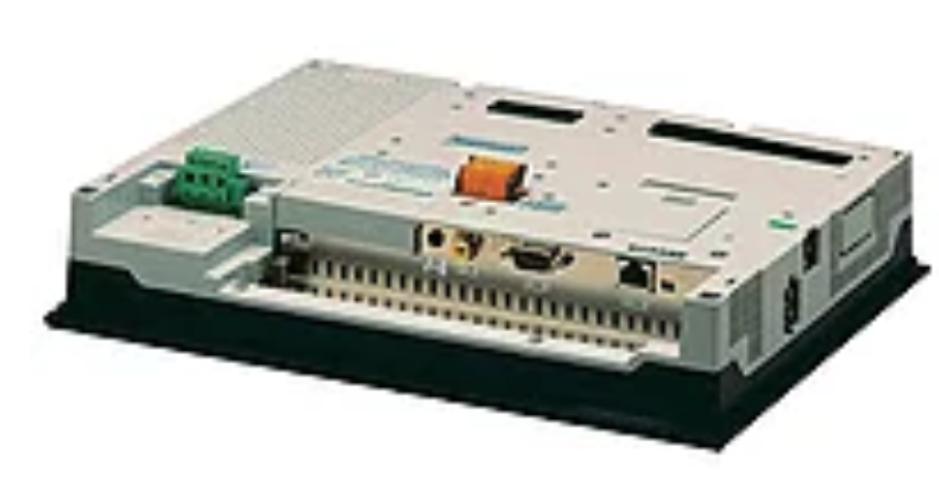Artificial Intelligence (AI) can significantly enhance the capabilities and effectiveness of the XBTGT6330 Human-Machine Interface (HMI) in industrial applications. The XBTGT6330 is a powerful HMI from Schneider Electric’s Magelis series, designed to facilitate the control and monitoring of industrial processes. By integrating AI, the XBTGT6330 can be made even more robust, intelligent, and user-friendly. Here’s how AI can improve the XBTGT6330 for industrial use:
1. Predictive Maintenance
AI can be integrated into the XBTGT6330 to enable predictive maintenance, a critical aspect of modern industrial operations. By analyzing real-time data and historical patterns from the HMI, AI algorithms can predict potential equipment failures or maintenance needs before they occur. This helps in scheduling maintenance activities during non-peak hours, reducing unplanned downtime, and extending the lifespan of machinery.
2. Enhanced Data Analytics and Visualization
AI can enhance the data analytics capabilities of the XBTGT6330 by providing advanced data processing and real-time insights. AI algorithms can analyze vast amounts of data collected by the HMI, identifying trends, anomalies, and optimization opportunities. AI-powered visualizations can offer operators a more intuitive and actionable view of the data, making it easier to make informed decisions quickly.
3. Intelligent Process Optimization
By integrating AI, the XBTGT6330 can learn from operational data and suggest optimizations for industrial processes. AI can analyze process efficiency, energy consumption, and production output, then recommend adjustments to improve performance. This could include optimizing machine parameters, reducing energy usage, or adjusting production schedules to increase efficiency and reduce costs.
4. Adaptive User Interface
AI can make the XBTGT6330's user interface more adaptive and personalized. The HMI could learn user preferences and operational patterns, customizing the interface to fit individual needs or roles. For example, an operator focused on specific tasks could have a tailored interface that highlights the most relevant controls and information, enhancing usability and reducing the risk of errors.
5. Predictive Alerts and Alarms
AI can enhance the alerting system of the XBTGT6330 by making it predictive rather than reactive. Instead of simply alerting operators to issues after they occur, AI can anticipate problems based on data trends and notify operators before an issue becomes critical. This proactive approach can prevent accidents, reduce downtime, and improve overall safety in the workplace.
6. Natural Language Processing (NLP) for Voice Commands
Integrating AI-driven Natural Language Processing (NLP) into the XBTGT6330 would allow operators to interact with the HMI using voice commands. This can be particularly useful in situations where hands-free operation is necessary, or when operators need to perform complex tasks quickly. AI-powered voice recognition can also help in reducing training time for new operators by providing an intuitive way to interact with the system.
7. AI-Driven Fault Diagnostics
AI can significantly improve fault diagnostics by quickly identifying and diagnosing issues in industrial processes. By analyzing data from sensors and other inputs, AI can pinpoint the root cause of a fault and suggest corrective actions. This reduces the time needed to troubleshoot and resolve issues, minimizing downtime and maintaining operational efficiency.
8. Enhanced Cybersecurity
AI can play a crucial role in enhancing the cybersecurity of the XBTGT6330. As industrial systems become more connected, they are increasingly vulnerable to cyber threats. AI can monitor network traffic and system behavior in real time, detecting and responding to suspicious activity more effectively than traditional security measures. AI can also learn from past security incidents to improve future threat detection.
9. Remote Monitoring and Control
AI can enable more advanced remote monitoring and control capabilities for the XBTGT6330. Operators could receive AI-generated insights and alerts on their mobile devices or computers, allowing them to monitor and control processes from anywhere. AI could also automate certain routine tasks, enabling remote operation with minimal human intervention, which is especially valuable in distributed or hard-to-access industrial environments.
10. Continuous Learning and Improvement
AI can facilitate continuous learning and improvement within the XBTGT6330 by regularly analyzing system performance and learning from operational data. This continuous learning loop allows the HMI to evolve over time, improving its efficiency, accuracy, and responsiveness. AI can also adapt to changes in the production environment, ensuring that the HMI remains relevant and effective as processes evolve.
Conclusion
By integrating AI, the XBTGT6330 can be transformed from a traditional HMI into an intelligent, proactive, and highly adaptable tool for industrial operations. AI enhances the system's ability to predict, diagnose, and optimize, leading to greater efficiency, reduced downtime, and improved safety. In an increasingly digital and connected industrial landscape, AI-enabled HMIs like the XBTGT6330 are poised to become essential components of smart factories and automated processes.

